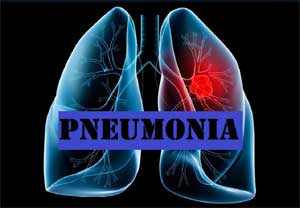- Home
- Editorial
- News
- Practice Guidelines
- Anesthesiology Guidelines
- Cancer Guidelines
- Cardiac Sciences Guidelines
- Critical Care Guidelines
- Dentistry Guidelines
- Dermatology Guidelines
- Diabetes and Endo Guidelines
- Diagnostics Guidelines
- ENT Guidelines
- Featured Practice Guidelines
- Gastroenterology Guidelines
- Geriatrics Guidelines
- Medicine Guidelines
- Nephrology Guidelines
- Neurosciences Guidelines
- Obs and Gynae Guidelines
- Ophthalmology Guidelines
- Orthopaedics Guidelines
- Paediatrics Guidelines
- Psychiatry Guidelines
- Pulmonology Guidelines
- Radiology Guidelines
- Surgery Guidelines
- Urology Guidelines
Simple urine test to diagnose bacterial pneumonia : Innovative research

In a groundbreaking research, a nanoparticle-based technology developed by MIT researchers could be used to improve the speed of diagnosis of pneumonia. The study appeared in the journal EBioMedicine.
Quick and accurate diagnosis of any disease is indispensable for effective treatment. Current diagnostic approach to detect pneumonia often takes several days to return definitive results especially in hospital-acquired cases which are often more severe.
“This type of sensor could also be used to monitor whether antibiotic therapy has successfully treated the infection,” says Sangeeta Bhatia, the senior author of the study.
"If the patient's symptoms go away, then you assume the drug is working. But if the patient's symptoms don't go away, then you would want to see if the bacteria is still growing. We were trying to address that issue," said Bhatia.
Bhatia and her colleagues have earlier developed a diagnostic approach that amplifies a signal from biomarkers already present in the body specifically, enzymes called proteases, which chop up other proteins. The human genome encodes more than 500 different proteases, each of which targets different proteins.
The team developed nanoparticles coated with peptides (short proteins) that can be chopped up by certain proteases, such as those expressed by cancer cells. When these particles are injected into the body, they accumulate in tumors, if any are present, and proteases there chop the peptides from the nanoparticles. These peptides are eliminated as waste and can be detected by a simple urine test.
The next step was to diagnose the infection by detecting proteases that are produced by microbes. The researchers began with a species of bacteria called Pseudomonas aeruginosa, which can cause pneumonia and is a particularly common cause of hospital-acquired cases. Pseudomonas expresses a protease called LasA, so the researchers designed nanoparticles with peptides that can be cleaved by LasA.
The researchers also developed a second nanoparticle-based sensor that can monitor the host's immune response to infection. These nanoparticles are covered in peptides that are cleaved by a type of protease called elastase, which is produced by immune cells called neutrophils.
In some patients with pneumonia, even if an antibiotic clears out the bacteria causing the infection, a chest X-ray may still show inflammation because neutrophils are still active. Using these two sensors together could reveal whether an antibiotic has cleared the infection, in cases where a chest X-ray still shows inflammation after treatment.
The researchers also showed that if they treated mice with an ineffective antibiotic, both bacteria levels and inflammation levels remained high. This kind of test could help to reveal whether an antibiotic is working, in cases where a patient's symptoms haven't improved within a few days.
For this study, the researchers delivered the nano-particles intravenously, but they are now working on a powdered version that could be inhaled.
According to Bhatia, this approach could be used to determine whether a patient has bacterial or viral pneumonia, which would help doctors to decide if the patient should be given antibiotics or not. The definitive test, growing a bacterial culture from coughing up mucus, takes several days, so doctors base their decisions on the patients' symptoms and X-ray imaging -- a process that may not always be accurate.
The researchers are also working on sensors that could easily distinguish between active and dormant forms of tuberculosis.
For full information log on to https://doi.org/10.1016/j.ebiom.2018.11.031

Disclaimer: This site is primarily intended for healthcare professionals. Any content/information on this website does not replace the advice of medical and/or health professionals and should not be construed as medical/diagnostic advice/endorsement or prescription. Use of this site is subject to our terms of use, privacy policy, advertisement policy. © 2020 Minerva Medical Treatment Pvt Ltd